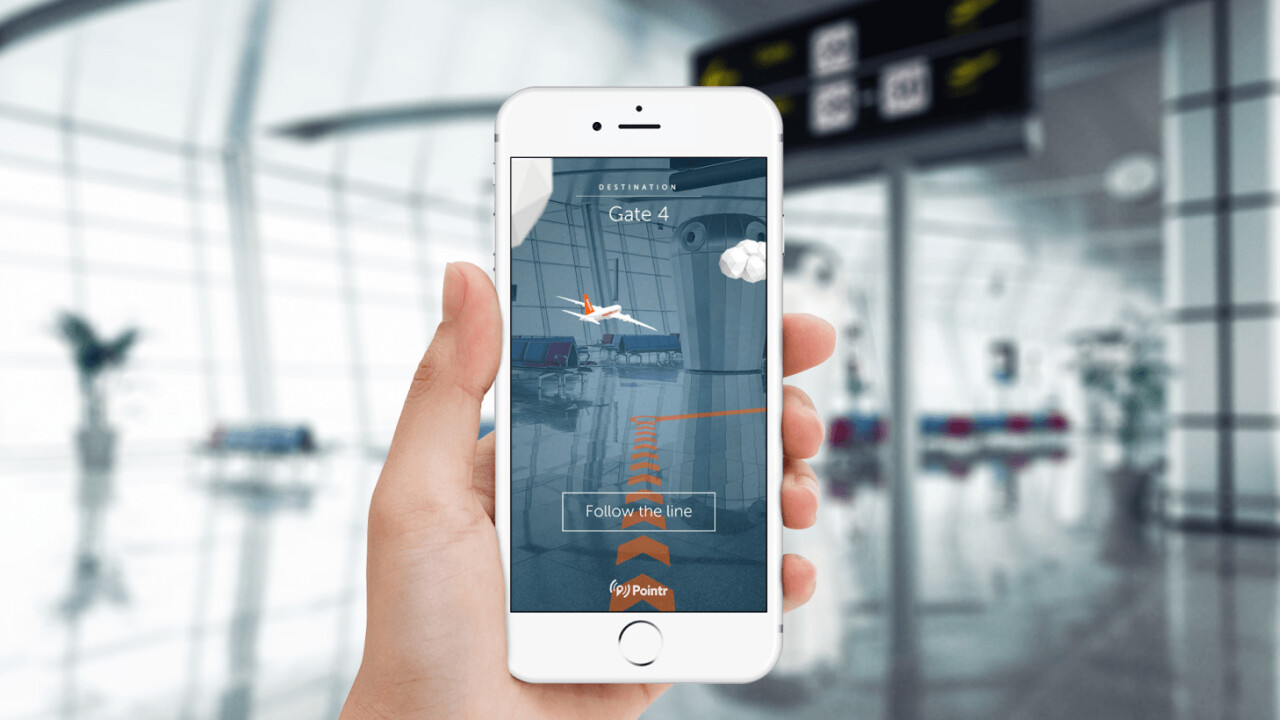
Mixed-reality is going to change the world. Already, we’re starting to see the fruits of this technology, as it springs confidently into our everyday lives, bolstered by advances like Apple’s ARKit and Microsoft’s Hololens.
Ikea’s new app, for example, lets you see what its ubiquitous furniture looks like in your house, without having to head to your local store. Mobile gaming has also embraced augmented reality with aplomb, as demonstrated by titles like Euclidean Lands, The Machines, and of course, Pokémon Go.
Speaking as a frequent traveller (and someone with precisely zero sense of direction), there’s only one augmented reality tool I’m excited about: indoor navigation.
It’s something I’ve been thinking about a lot. Wouldn’t it be amazing if, should you find yourself lost in a shopping mall or an airport, you just whip out your phone and follow a trail of breadcrumbs? It’d mean no more missed flights. No more hours spent aimlessly wandering around a food court, looking for the toilet.
There are already some genius experiments with AR navigation in outdoor environments, supplementing existing services like Waze and Google Maps. Nothing really exists for the great indoors.
ARKit + CoreLocation pic.twitter.com/nTdKyGrBmv
— Andrew Hart (@AndrewProjDent) July 17, 2017
And the idea is not entirely far-fetched. This technology already exists. One of the UK’s busiest airports, Gatwick Airport, is deploying a system that shows passengers where their gate is, using a dedicated app and thousands of tiny BlueTooth beacons.
Gatwick’s system was built by Pointr Labs, a UK startup that develops augmented reality navigation systems. I spoke to Axel Katalan, the company’s co-founder and CMO, to ask about the practicalities involved with building such a system. Are we on the cusp of never having to ask for directions ever again?
Spoiler alert: Probably not. Although some places are introducing AR indoor guidance, it’s unlikely to reach ubiquity any time soon, as the technology is really expensive to make.
The biggest hurdle, Katalan explained, was the fact that this is quite a specialised field, and therefore requires skills that are simultaneously niche, but also highly sought after.
“You have to be familiar with various aspects of 3D game development, preferably using software like Maya or Blender,” Katalan explained. “There is also the need to have a strong grasp of UX principles, as we are entering a new territory of design. In general you need to be pretty strong with reference frames and vector maths. That’s from the AR front.”
I was curious how this is reflected in the composition of a development team. Katalan then rattled off a laundry-list of positions, all of which he said are essential.
In addition to dedicated Android and iOS developers, you can expect to need a game developer specializing in Unity or Unreal Engine, one 3D artist working solely on models, plus another focusing on UX and design.
That’s five highly-skilled (and generously paid) technology professionals working on a single project.
It’s therefore hardly a surprise that AR-based navigation tools cost so much to build. According to Katalan, you can expect to pay £100,000 ($130,000) for a “modestly ambitious” app.
This is chump change to larger businesses, like boutique shipping centers and large international airports. Smaller players can forget about it though, at least for now, as it remains prohibitively expensive.
So, here’s the good news: it won’t always be this way. Firstly, Apple’s ARKit tech will lower the cost of building indoor navigation software, as it strips away complexity.
“ARKit definitely lowers the bar considerably. Programmers don’t need to know high level maths, for example. Before, our developers needed to be familiar with things like quarternions to be able to construct even a basic experience,” Katalan explained.
Secondly, the tech that powers these applications will eventually become commoditized. An off-the-shelf solution that could be modified as required would reduce costs massively. As Katalan explained, “once [the] foundation is built, you can replicate and scale it to numerous clients at no cost.”
That’s a really exciting proposition, especially if it ends up integrated into something like Google Maps or Apple Maps. But until then, you’d best get used to asking for directions. Anyone know where the restroom is?
Get the TNW newsletter
Get the most important tech news in your inbox each week.